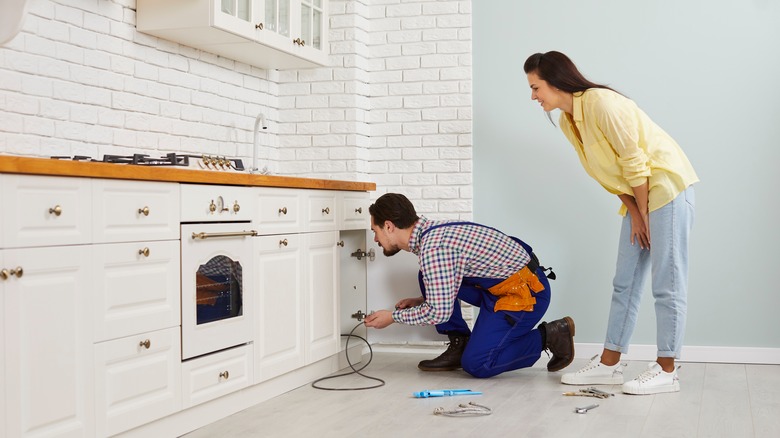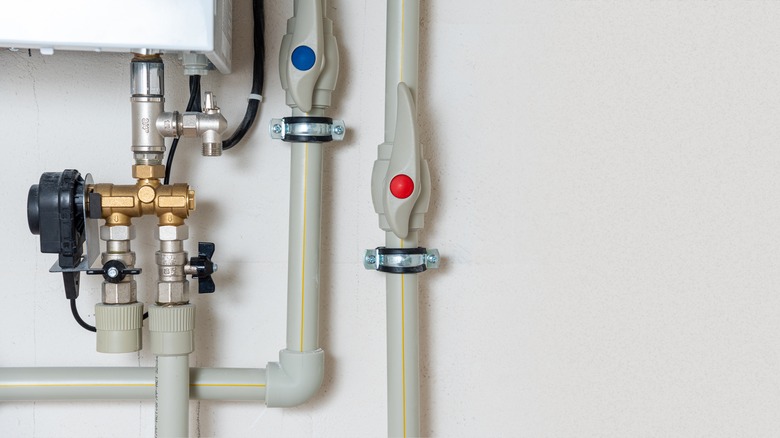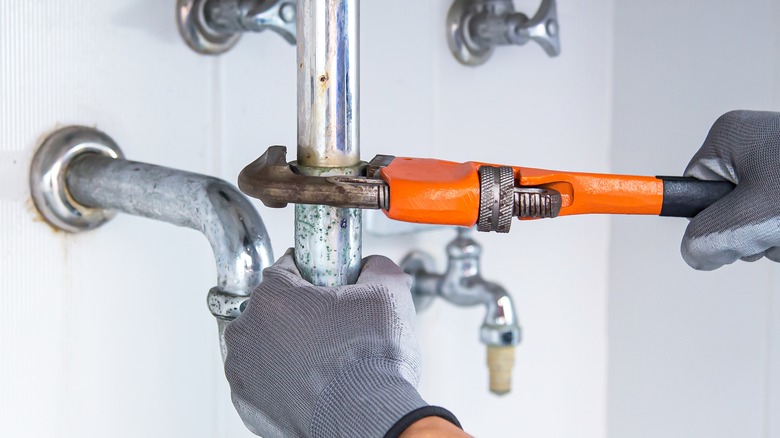Save Hundreds Of Dollars With This Simple 30-Second Plumbing Hack
Did you know that the average cost of a plumbing emergency is around $80 an hour? According to Thumbtack, emergency plumbers can and do charge quite a bit more than regular plumbers, who are already far from cheap. Plumbing emergencies can happen for all kinds of reasons, but anytime you have an uncontrolled water flow, there is one crucial first step you need to take: shutting off the water valve. Depending on the emergency, this could mean the main valve that brings water into your entire house, or an auxiliary valve associated with a specific appliance or room within your home.
If your water valve is stuck and can't be shut off, what started out as a minor issue and perhaps some soggy carpet can quickly escalate into major water damage, such as waterlogged ceilings, that may cost thousands of dollars to fix (on top of the $80/an hour rate for the emergency plumber). So how do you make sure your water shut off valves will work at the moment of truth, when you need to use them in an emergency situation? There's actually a very simple way to maintain smooth water valve operation, and it will take you less than 30 seconds to do.
Background on plumbing valves
Before getting into valve maintenance, some background information on how plumbing valves work will be helpful. As Atlas Home Services explains, water flows into your house from your local municipality's water supply via a series of underground pipes, usually from city pipes underneath the middle of your street to a main water pipe feeding into your home. A main shut off valve connects this pipe to your house, usually in your basement (if you have one) or lower down along one of your home's exterior walls.
From there, water flows from your house's main pipes into auxiliary pipes that branch off and transport it to your home's water-using appliances. These include the water heater, sinks in your bathroom and kitchen, your dishwasher, toilets, showers and bathtubs, the washing machine, etc.
Each of these auxiliary pipes typically have their own smaller shut-off valves as well, usually located underneath the appliance itself (like in the cabinet under your kitchen sink). These valves are quite helpful if you're doing a bathroom renovation or lengthy plumbing repair in your kitchen, since you can shut off one room or even one specific appliance, as opposed to turning off the main valve and halting water flow to your entire home. That way, you won't have water spurting out of your bathroom sink while you're trying to switch out your faucet, but you can still run your washing machine in the garage.
Plumbing valve maintenance
Once you've identified and located all of your water valves — the main valve and the auxiliary valves in each room where water is used — Atlas Home Services recommends labeling every single valve so that all members of your household can easily find them and shut them off in the event of a plumbing emergency. Seconds count when your bathroom is being deluged by an overflowing tub, and the last thing you want is for someone to be scrambling around, pulling on random pipes and potentially making the situation even worse. This labeling is the first step in valve maintenance, and it'll take you longer than 30 seconds, but the second step is a snap. The hardest part may be remembering to actually do it.
If you want to make sure your valves always open and close properly, simply open and close them a couple of times a year. The motion helps to break down mineral settlement that can accumulate around the valves. If too much sediment collects on a valve, it may become caked on and prevent it from properly moving. This hack is especially important if you live in a city or an area with hard water, which is high in concentration of minerals, as defined by the U. S. Geological Survey. Make sure those minerals doesn't pile up and prevent your valves from working at the moment it matters most.


